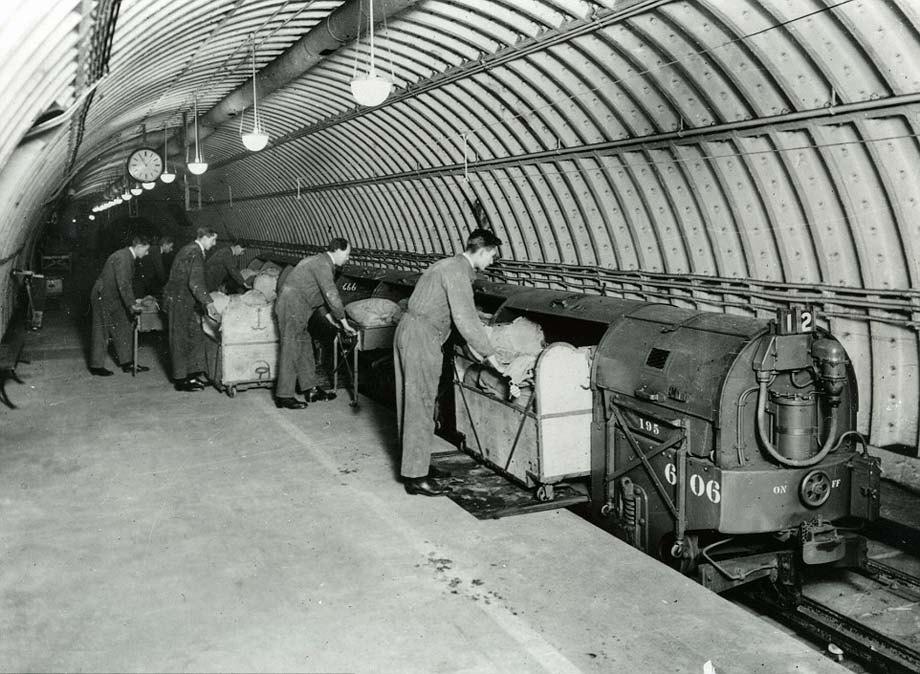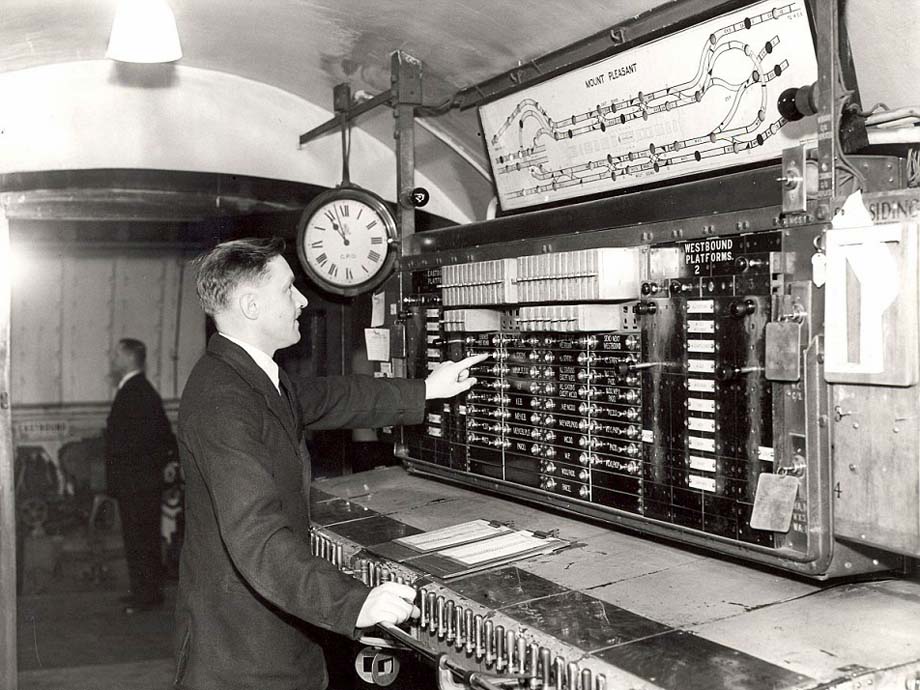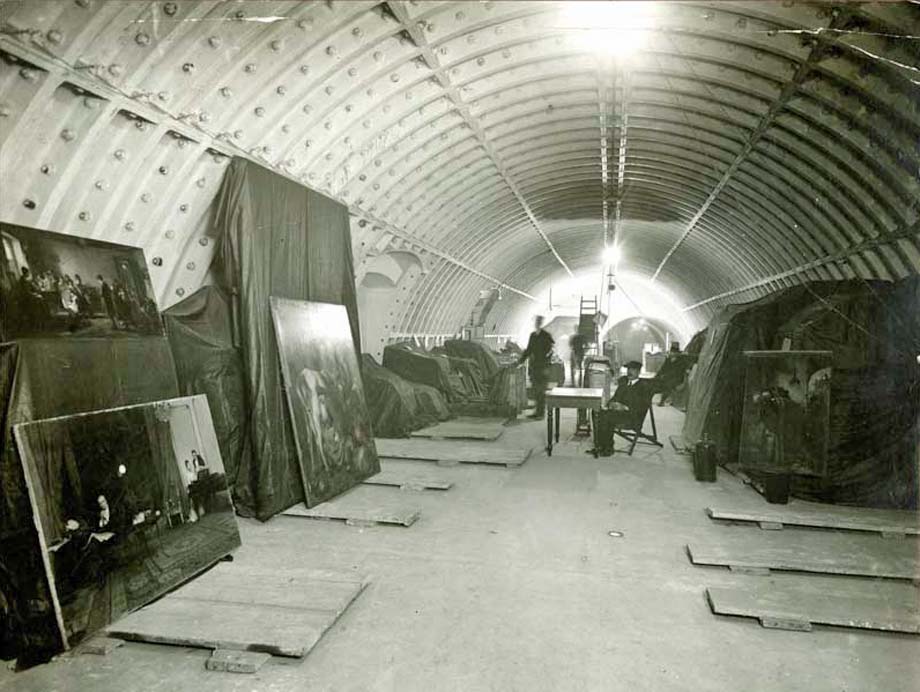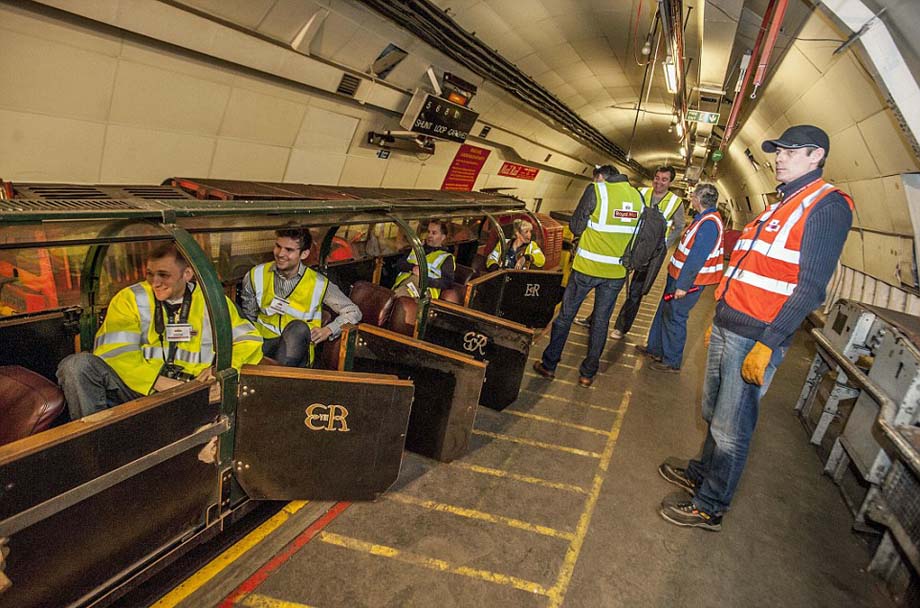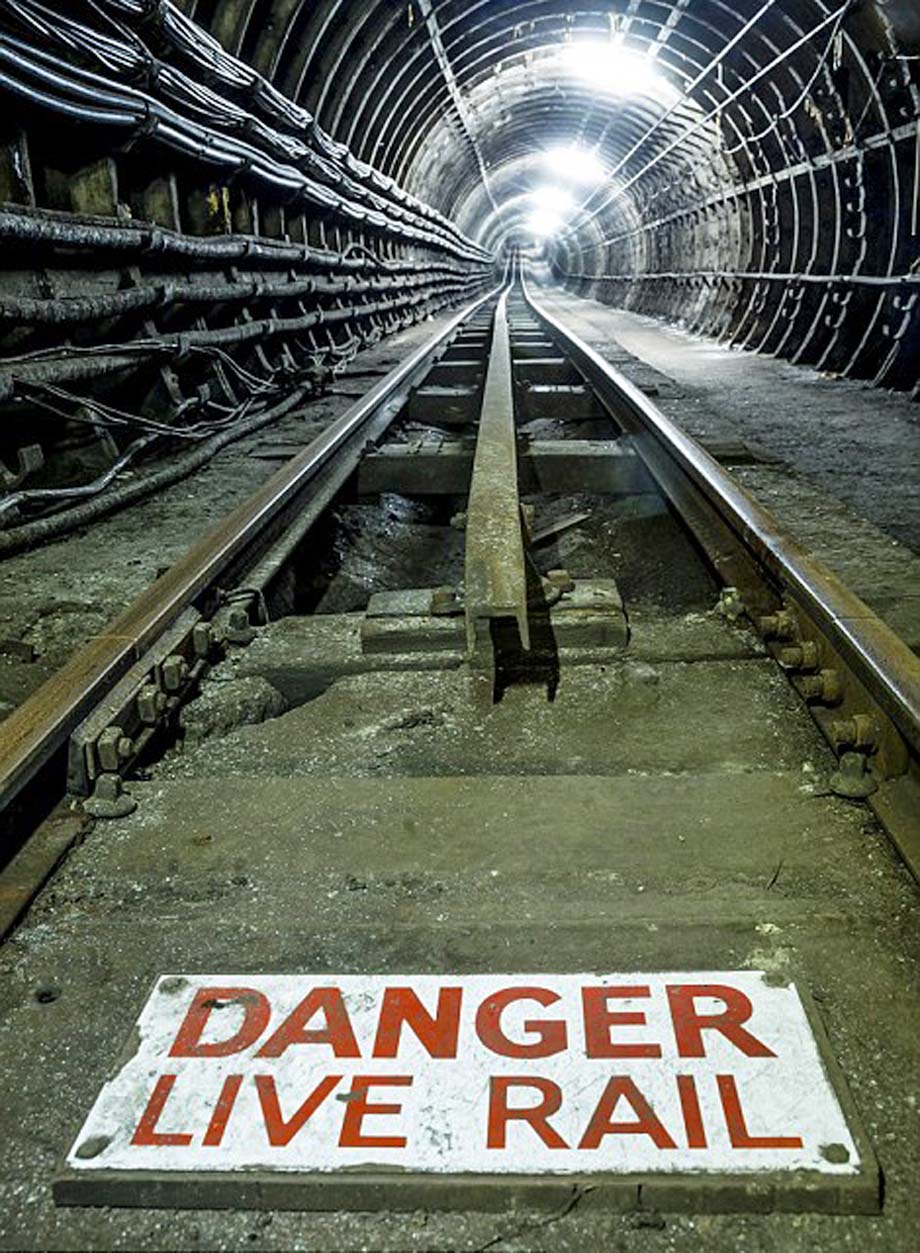Hidden 70 feet below the streets of the capital, these mothballed railway tunnels were once home to an engineering marvel that is seen by some as the Post Office's best kept secret.
When it first opened in 1927, the Post Office Underground Railway was the world's first driverless, electrified railway, and at its peak it transported 1.4 billion letters a year along 23 miles of track.
For 19 hours a day the trains carried mail from Whitechapel on the east side of London to Paddington in the west.
The need for Mail Rail was first voiced when London's streets became so congested at the turn of the 20th century that it resulted in severe delays transporting post between the capital's main Post Offices and railway stations.
In 1908, a team of Post Office engineers visited both the Chicago freight subway system, and an underground network in Berlin, Germany, and three years later hatched a plan for a similar system beneath London.
The idea was to build a subway network serving the main sorting offices between Whitechapel and Paddington, with the option of extending the system at various points.
In its prime, a workforce of 220 kept the Mail Rail running, with the tunnels running beneath the city's iconic Oxford Street, and at one point, coming within a few feet of the Bakerloo Line.
Construction work began in 1914 but despite the tunnels being completed within three years work on the railway did not resume until 1923 because of the First World War.
The Treasury would not allow the Post Office to order or install the operating equipment during wartime, and when it ended, the high price of materials meant that work was delayed for nearly half a decade.
The tunnels were used during the First World War to store and protect art treasures belonging to the National Portrait Gallery and the Tate Gallery.
When it was finally completed, trains ran in a single tunnel which at some stages narrowed to just 7 feet wide.
However, within three years the original rolling stock of 90 trains had to be replaced because of excessive wear being caused to the track.
New trains were introduced in 1930, with each 27 foot long single car trains capable of carrying four mail bag containers.
Every container held an average 15 bags of letters or six bags of parcels.
The full line included stops at Liverpool Street, King Edward Street, Mount Pleasant, New Oxford Street, Rathbone Place, Wimpole Street, and Bird Street.
These trains lasted until 1980, when a new fleet was once again introduced having been trialled in the 1960s.
Mail Rail was finally closed in 2003, after Royal Mail built a new hub in Willesden, west London, and it was decided it would be cheaper to transport mail by road instead of using the tunnels.
But soon it is hoped the tunnels will be opened to the wider public on a permanent basis, with Islington Council approving plans to allow tourists to descend beneath the city and ride the secret Tube from early 2017.
Ray Middlesworth, an engineer who has worked in the tunnels, said, "It's the holy grail for underground explorers, a hidden part of the rail network. Some people called it the Post Office's best kept secret."
A new postal museum will also open on the Mount Pleasant site in 2017, displaying artefacts from British postal history, including telegrams from the Titanic, original evidence from the Great Train Robbery trial, and pistols used to defend mail coaches in the 19th Century.
Andy Dangerfield.
(likely no image with original article)
(usually because it's been seen before)
provisions in Section 29 of the
Canadian Copyright Modernization Act.


